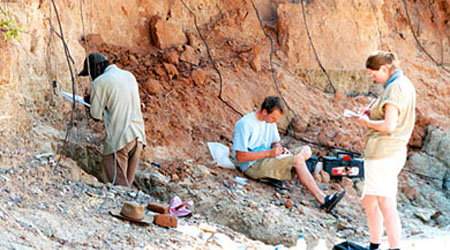The Luangwa Valley
Zambia is one of the poorest nations in the world, crippled by debt and disease yet stable and peaceful. The meeting point of central, eastern and southern Africa, at the very heart of the continent, it has an extraordinarily rich and diverse cultural history.
Humans have lived in the region for over two million years and for the last 2000 years farmers and foragers have coexisted.
The Luangwa Valley is at the southern end of the east African rift valley system. One of the continent's least known rivers, the Luangwa with its palm fringed lagoons, winds 400 miles through the Valley to join the mighty Zambezi.
A tsetse fly and malarial zone, it is inhospitable to farmers and has traditionally been the territory of hunter-gatherers. Historical records of the Valley began with the arrival of the Portuguese in the 16th century;
Livingstone was one of the early British explorers to cross the Luangwa River. Slave traders from the Indian and Atlantic Oceans, of Arab, European and African origin, all exploited its peoples.
Current archaeological and anthropological research, led by Professor Lawrence Barham of the University of Liverpool, is expanding our knowledge about the area's peoples and past environments.
His team has shown that the Valley has been either a home or refuge to humans for at least two million years.